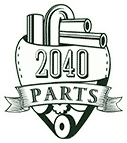Ultralight Ca-2 Aircraft Plans And Construction Manual, Rolled In Tube on 2040-parts.com
Cooperstown, New York, United States
|
This is a set of new, unused plans and construction manual for the CA-2 ultralight aircraft. Drawn by Frank Griffith and was originally sent from Hummel. This is complete, there is over 2 pounds of paper in the tube, includes instruction manual and drawn plans.
All proceeds from this auction will be donated to: The Old Rhinebeck Aerodrome, Rhinebeck, NY. From Wikipedia, the free encyclopedia:
The Adams CA-2 is a single seat, low-wing, American ultralight aircraft that was designed by Frank Griffith of Corning Aircraft around 1992 and was available as plans for amateur construction until 1999. In 1999, Hummel Aviation of Bryan, Ohio began offering the design.[1][2][3][4] Although the design was well received, plans were no longer listed as being available from Hummel Aviation as of 2007.[5] In 2011, Adams Aeronautics Company of Dallas, Georgia, took over sales and support of the CA-2 design.DevelopmentThe design goals of the CA-2 described a plans-built aircraft for the US FAR 103 Ultralight Vehicles category, including a maximum 254 lb (115 kg) empty weight. The CA-2 was also intended to be one of the lowest cost ways of obtaining an ultralight aircraft. These goals were met and the resulting aircraft has an empty weight of 250 lb (113 kg), when equipped with a 28 hp (21 kW) Rotax 277 engine. At the time it entered the market, the airframe construction cost was estimated to be US$1600 and the total completion cost US$5000–6000. The price for the plans, consisting of 40 sheets of 11"X17" (28 X 43 cm), was US$150 in 2011.[1][2][3][4] The CA-2 requires about 600 hours to build. The airframe is of all-metal construction using 2024-T3 aluminum sheet, extruded angles and tubing, fastened primarily with stainless steel pop rivets. Construction requires normal hand tools, plus a small bending brake and a tube bender.[1] The fuselage and wings are of monocoque stressed skin construction. The wings include plain flaps and differential ailerons and are stressed to +4.4 and -2.2 g. The wings are removable by withdrawing three bolts. The control surfaces are made from aluminum tubing, are fabric covered and actuated by pushrods. The landing gear is of conventional configuration with a steerable tailwheel linked to the rudder.[1] The prototype was powered by a Rotax 277. Heavier engines can be installed, although the aircraft will not then meet the US FAR 103 weight requirements as an ultralight aircraft. Other engines used include the 40 hp (30 kW) Rotax 447, 35 hp (26 kW) Rotax 377, 30 hp (22 kW) 1/2 VW and the 22 hp (16 kW) Hirth F-33.[1][2][3][4] Specifications (CA-2)Data from Cliche, Kitplanes & Aerocrafter[1][2][3][4] General characteristics
Performance
|
||||||||||||||||||
Plans for Sale
 Circa reproductions nieuport 11 instruction book with drawings
Circa reproductions nieuport 11 instruction book with drawings Building manual for, corvair flight engines
Building manual for, corvair flight engines Overhaul manual, avco lycoming, direct drive engine
Overhaul manual, avco lycoming, direct drive engine 1978 cessna 152 pilots operating handbook, supplement book, and a checkmate
1978 cessna 152 pilots operating handbook, supplement book, and a checkmate Phantom ultralight or lsa
Phantom ultralight or lsa Plans assembly instructions, experimental homebuilt rv-9/9a
Plans assembly instructions, experimental homebuilt rv-9/9a
Hyundai i10 (2014)
Wed, 07 Aug 2013This all-new Hyundai i10 is the second generation of the Korean brand's European-designed and engineered A-segment hatch. It's 80mm longer, 65mm wider and 50mm lower than its predecessor, although its wheelbase has only grown by 5mm. This new set of dimensions reduces some of the upright look of its predecessor as Hyundai strives to shift its model range further upmarket.
Prize for budding young motoring journalists
Wed, 03 Jun 2009By Peter Adams Motoring Issues 03 June 2009 12:39 Aspiring young car writers searching for a gateway into motoring journalism may want to start typing and enter The Sir William Lyons Award 2009. The Sir William Lyons Award, which is sponsored by Jaguar and promoted by The Guild of Motoring Writers, is free to enter and open to anyone aged between 17 and 23, of British nationality and resident in the United Kingdom. The winner will receive a trophy and a cheque for £2000 at the Guild’s annual dinner and awards evening in London.
Jaguar XF 2.2D Review
Mon, 27 Feb 2012The Jaguar XF now comes with the 2.2 Diesel engine We’ve had the Jaguar XF 2.2 Diesel Premium Luxury in for a week for review and road test. How does the 2012 XF fare with the entry-level 2.2 litre diesel engine? We’ll hold up our hands and state at the off that the Jaguar XF is one of our favourite cars.



